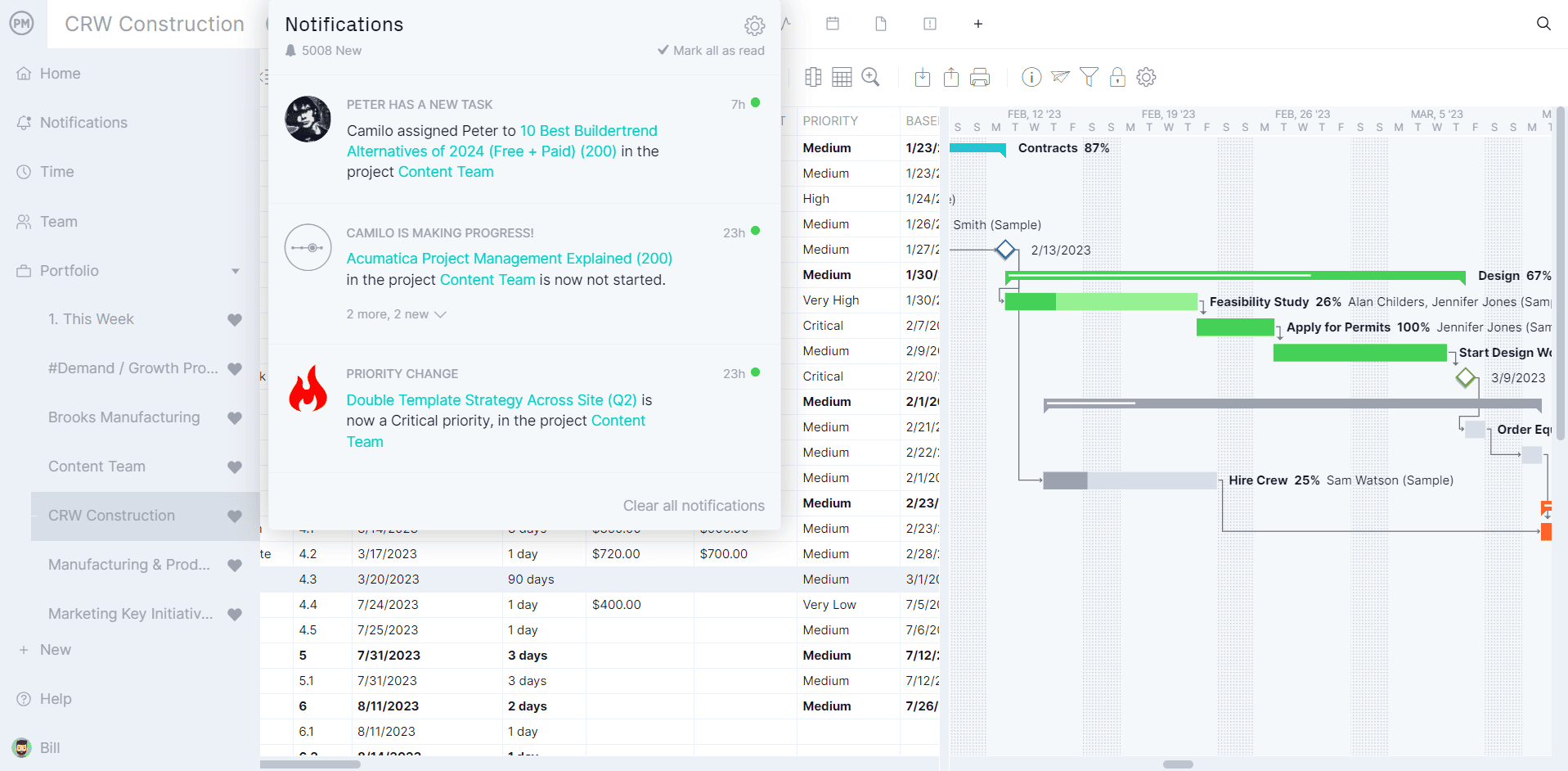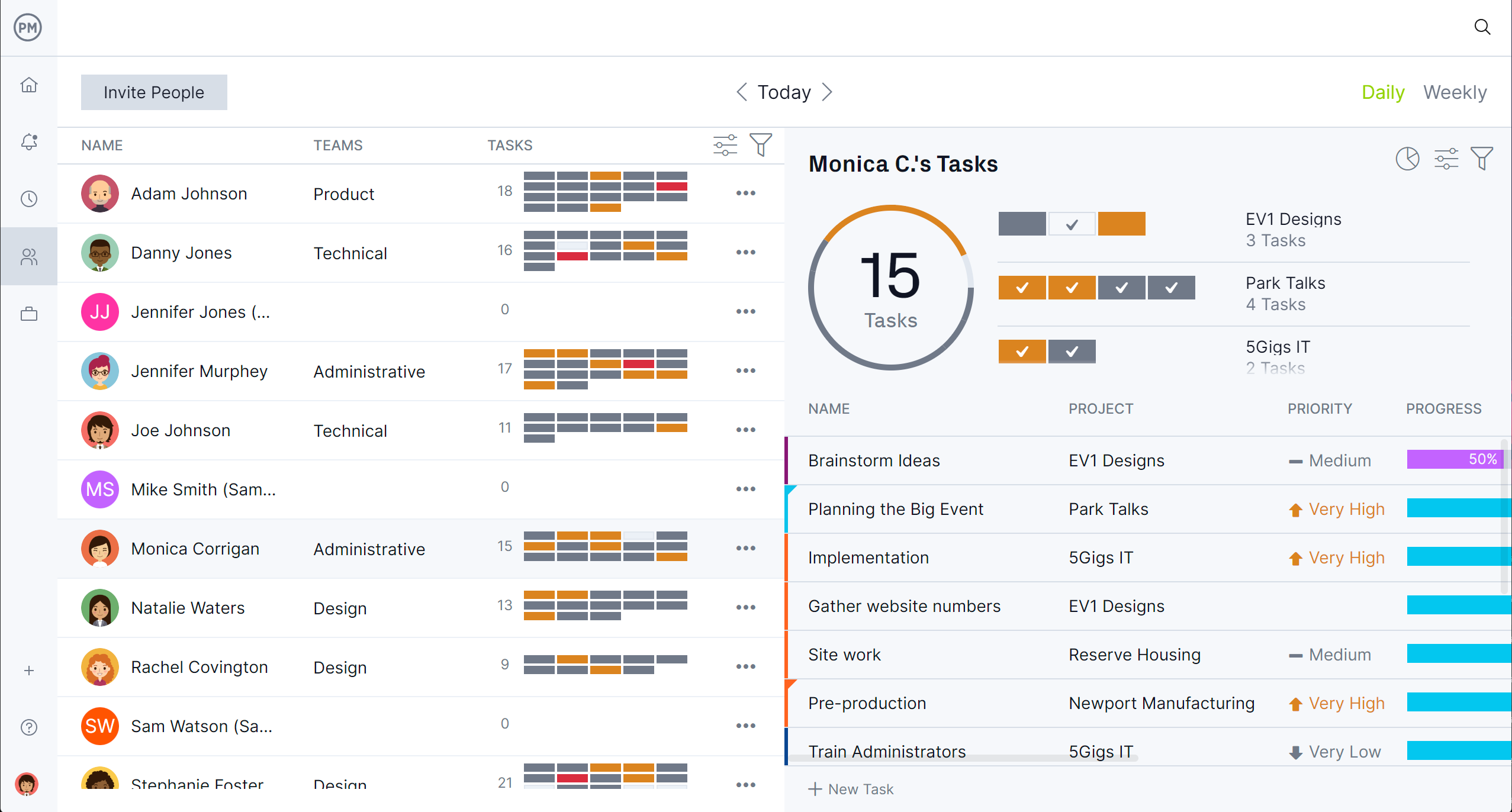A stakeholder communication plan outlines how project teams share information with stakeholders throughout a project’s lifecycle. It defines what will be communicated, who will receive updates and how often communication will occur.
Having a stakeholder communication plan ensures alignment, prevents misunderstandings and helps maintain trust between project managers and their stakeholders. Whether managing small teams or large enterprises, this structured plan keeps everyone informed and focused on project success.
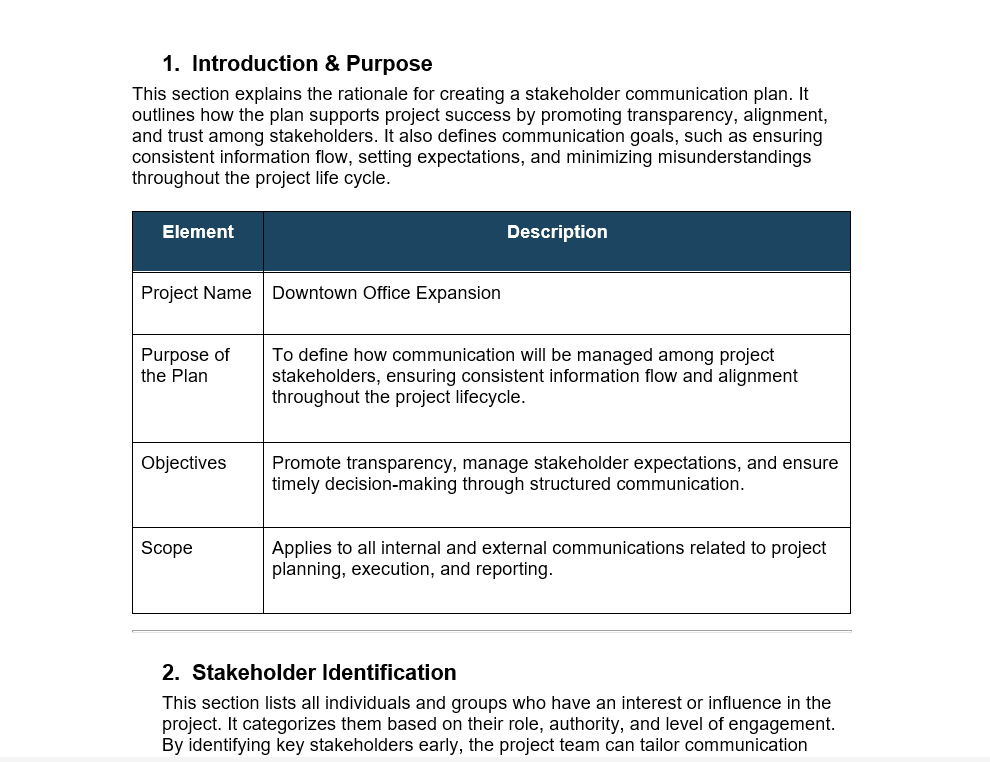
Get your free
Stakeholder Communication Plan
Use this free Stakeholder Communication Plan for Word to manage your projects better.
What Is a Stakeholder Communication Plan?
A stakeholder communication plan is a document that defines how project information will be distributed among stakeholders. It details communication methods, reporting frequency and the type of updates different stakeholders receive. The goal is to ensure everyone stays informed, engaged and aligned with the project’s goals. This plan reduces confusion and keeps decision-makers aware of progress, issues, and milestones.
Project management software simplifies stakeholder communication by centralizing updates, discussions and progress reports. With shared dashboards and automated notifications, teams can deliver real-time insights without relying on scattered emails or manual updates. Software tools allow stakeholders to view timelines, budgets and performance metrics from one source of truth, ensuring clarity and accountability across departments and projects.
ProjectManager is ideal for creating a stakeholder communication plan because it combines planning, tracking and collaboration tools in one platform. It lets managers assign communication responsibilities, schedule updates and visualize progress through AI-powered dashboards and reports. Customizable notifications, document sharing and workload tracking make it easy to maintain transparency within your team and for stakeholders. Get started with ProjectManager today for free.

What Is a Stakeholder Communication Plan?
A stakeholder communication plan is a document that explains how information will be shared among project stakeholders. It outlines what needs to be communicated, who receives updates and how often communication occurs. The plan ensures that everyone stays informed and engaged throughout the project. It creates structure for managing expectations and helps avoid confusion or missed updates that could slow project progress.
When to Make a Stakeholder Communication Plan
Ideally, a stakeholder communication plan should be created at the start of a project during the planning phase. This ensures that communication expectations are set before work begins. Early planning helps identify all key stakeholders and determine the right level of detail for updates. Having a clear communication process early helps project managers maintain engagement and reduce issues caused by unclear or late information.
Why Is It Important to Write a Stakeholder Communication Plan?
Writing a stakeholder communication plan is important because it keeps all parties informed and aligned with project goals. It defines how updates will be shared, who will receive them and how feedback will be managed. A clear plan promotes transparency and trust among stakeholders. It also helps prevent misunderstandings and ensures everyone knows the project’s progress and priorities at every stage.
Related: 13 Free Stakeholder Management Templates for Excel & Word
Who Is Responsible for Writing the Stakeholder Communication Plan?
The project manager is usually responsible for writing the stakeholder communication plan. They work closely with the project sponsor and key team members to identify stakeholders and their communication needs. The project manager ensures that the plan reflects each stakeholder’s role and level of involvement. They also oversee how communication is delivered and update the plan as the project evolves.
What Should Be Included in a Stakeholder Communication Plan?
A stakeholder communication plan should include details about who the stakeholders are, what information they need, when and how updates will be shared and who is responsible for communication. It should also define the communication goals and describe how feedback will be collected and used to keep everyone informed and aligned throughout the project.
1. Introduction & Purpose
This section explains the rationale for creating the stakeholder communication plan. It outlines how the plan supports project success by promoting transparency, alignment and trust among stakeholders. It also defines communication goals, such as ensuring consistent information flow, setting expectations and minimizing misunderstandings throughout the project life cycle.
2. Stakeholder Identification
This section lists all individuals and groups who have an interest or influence in the project. It categorizes them based on their role, authority and level of engagement. By identifying key stakeholders early, the project team can tailor communication efforts, address specific needs and build strong relationships that contribute to smoother collaboration and decision-making.
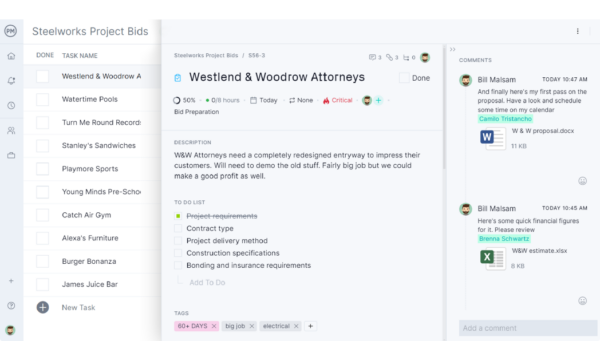
3. Communication Objectives
This section defines the purpose of project communications and what outcomes they should achieve. Objectives often include maintaining stakeholder alignment, managing expectations, supporting decision-making and keeping everyone informed of progress or risks. Clear communication objectives guide how messages are structured, delivered and monitored to ensure that every communication activity adds measurable value.
4. Communication Matrix
This section serves as the blueprint for all communication activities. It specifies who receives what information, how frequently, through which channels and who is responsible for delivering it. The communication matrix ensures accountability, consistency and efficiency by clearly mapping out the flow of information between stakeholders at every stage of the project.
5. Communication Channels
This section identifies the various tools, platforms and methods used to share information. Examples include meetings, email updates, dashboards, reports and collaboration software. By defining the most effective communication channels for each audience, the plan ensures that stakeholders receive timely, accessible and relevant information in the format they prefer.
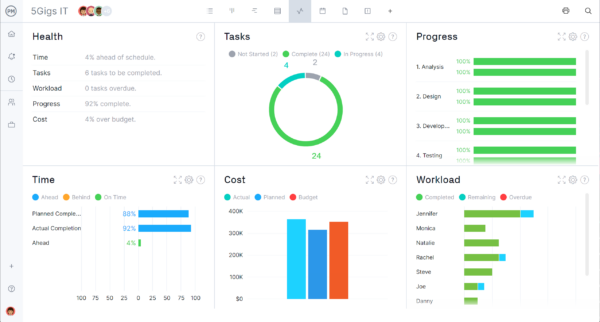
6. Roles and Responsibilities
This section defines who is responsible for preparing, approving and delivering project communications. It clarifies accountability within the communication process, typically outlining roles for the project manager, sponsor and team members. Clearly defined responsibilities help prevent confusion, ensure consistency in messaging and maintain the flow of accurate information across all stakeholder groups.
7. Communication Activities Schedule
This section outlines the timing and frequency of communications throughout the project. It may include recurring status reports, review meetings or milestone updates. A structured communication schedule helps maintain stakeholder engagement, ensures timely reporting and aligns communication activities with key project phases or deliverables, promoting predictability and reliability across all interactions.
8. Feedback Gathering Methods
This section details how stakeholders can provide feedback, share concerns or request clarification. Examples include surveys, meetings and direct communication channels. Establishing feedback mechanisms fosters two-way communication, helping the project team understand stakeholder perspectives, address issues early and continuously improve the effectiveness of project communications and overall stakeholder satisfaction.
9. Escalation Procedures
This section describes how critical issues, delays or conflicts are communicated and escalated to the appropriate decision-makers. It defines escalation levels, responsible parties and response time expectations. A clear escalation process ensures that urgent matters are handled efficiently, minimizing disruptions and maintaining stakeholder confidence in the project’s communication and management systems.
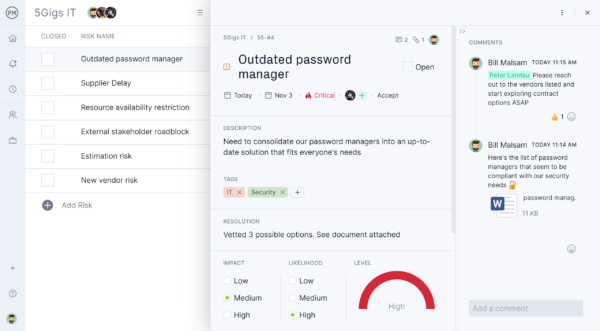
10. Monitoring and Updates
This section explains how the communication plan’s effectiveness will be evaluated and adjusted as the project evolves. It includes methods for tracking communication performance, gathering feedback and updating the plan based on lessons learned. Continuous monitoring ensures that communication strategies remain relevant, efficient and aligned with changing stakeholder needs and project conditions.
Stakeholder Communication Plan Template
Download this free stakeholder communication plan to ensure that everyone involved in a project stays informed and aligned. This template outlines key elements, including project goals, stakeholder identification, communication objectives and a matrix specifying frequency, channels and responsible parties. By using this structured approach, project teams can maintain transparency, manage expectations and foster collaboration throughout the project lifecycle.
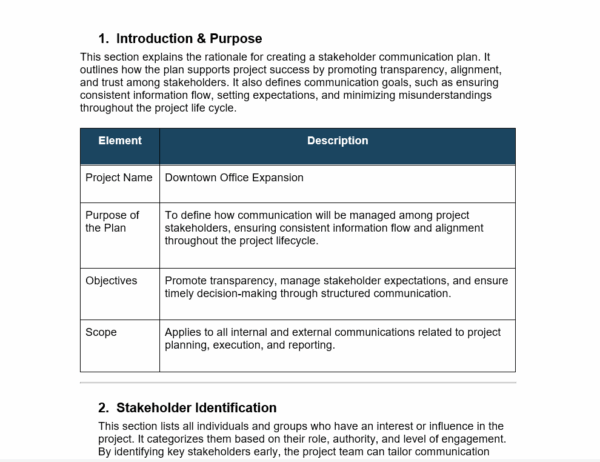
It also defines feedback mechanisms, escalation procedures and monitoring activities to track communication effectiveness. Roles and responsibilities are clearly assigned, ensuring timely updates and accurate reporting. With a plan like this, projects run smoothly, risks are minimized and stakeholders remain engaged and supportive from start to finish.
Stakeholder Communication Plan Example
In the Downtown Office Expansion Project, effective communication was crucial to coordinating multiple stakeholders—from city officials and contractors to financial analysts and the executive board. To ensure information flowed efficiently and transparently, the project team developed a comprehensive stakeholder communication plan.
This plan outlines who needs what information, how and when it should be shared and who is responsible for delivering it. The following tables present the structure of that plan, demonstrating how clear communication channels, defined responsibilities and consistent feedback loops helped maintain alignment, minimize misunderstandings and keep the project progressing smoothly toward its milestones and objectives.
1. Introduction & Purpose
| Element | Description |
| Project Name | Downtown Office Expansion |
| Purpose of the Plan | To define how communication will be managed among project stakeholders, ensuring consistent information flow and alignment throughout the project lifecycle. |
| Objectives | Promote transparency, manage stakeholder expectations and ensure timely decision-making through structured communication. |
| Scope | Applies to all internal and external communications related to project planning, execution and reporting. |
2. Stakeholder Identification
| Stakeholder Name | Role | Interest Level | Influence Level | Communication Need |
| Laura Jenkins | Project Sponsor | High | High | Executive updates and milestone reports |
| David Chen | Construction Manager | High | Medium | Daily progress and issue tracking |
| Emily Rivera | Finance Analyst | Medium | Medium | Budget status and cost updates |
| City Permit Office | Regulatory Body | Low | High | Compliance documentation and inspection schedules |
3. Communication Objectives
| Objective | Description | Expected Outcome |
| Maintain stakeholder alignment | Ensure everyone understands project goals and progress. | Stakeholders remain informed and supportive. |
| Manage expectations | Communicate realistic timelines and deliverables. | Reduced misunderstandings and scope disputes. |
| Facilitate decisions | Provide timely data for informed approvals. | Faster response to project issues and changes. |
| Support collaboration | Encourage participation across departments. | Improved teamwork and accountability. |
4. Communication Matrix
| Stakeholder | Information Type | Frequency | Channel | Responsible | Format |
| Project Sponsor | Executive Summary | Weekly | Project Manager | PDF report | |
| Project Team | Task Updates | Daily | Project Dashboard | Team Leads | Online tool |
| City Inspectors | Permit Documentation | As needed | Shared Drive | Compliance Officer | Digital files |
| Finance Dept. | Budget Status | Bi-weekly | Meeting | Finance Analyst | Presentation slides |
5. Communication Methods & Channels
| Method | Channel Type | Purpose | Audience | Frequency |
| Weekly Status Email | Written | Summarize weekly progress | All stakeholders | Weekly |
| Project Dashboard | Digital | Real-time task tracking | Internal team | Continuous |
| Review Meetings | Verbal | Discuss key milestones | Sponsors managers | Bi-weekly |
| Reports & Presentations | Written/Visual | Share performance metrics | Executives | Monthly |
6. Roles and Responsibilities
| Role | Name | Responsibility | Deliverable | Frequency |
| Project Manager | Laura Jenkins | Oversees communication flow and ensures timely updates. | Weekly project reports | Weekly |
| Communications Lead | Sarah Patel | Prepares stakeholder summaries and manages meeting notes. | Stakeholder newsletter | Bi-weekly |
| Construction Manager | David Chen | Provides site progress updates and risk alerts. | Site status reports | Daily |
| Finance Analyst | Emily Rivera | Tracks cost performance and prepares budget summaries. | Budget update reports | Monthly |
7. Schedule or Calendar
| Communication Type | Date / Frequency | Responsible | Audience | Notes |
| Kick-off Meeting | January 10 2025 | Project Manager | All stakeholders | Introduce project and roles |
| Progress Reports | Every Monday | Communications Lead | Internal team | Weekly updates via email |
| Executive Review | First Friday each month | Project Manager | Sponsors | Review milestones and costs |
| Site Inspection Updates | As required | Construction Manager | City Permit Office | Send compliance updates |
8. Feedback Mechanisms
| Feedback Method | Responsible | Audience | Frequency | Purpose |
| Post-meeting Surveys | Communications Lead | All participants | After major meetings | Gather feedback on clarity and relevance |
| Suggestion Form | Project Manager | Team members | Continuous | Encourage improvement ideas |
| Stakeholder Interviews | Sponsor | Key external partners | Quarterly | Assess satisfaction and engagement |
| Feedback Email Channel | Communications Lead | All stakeholders | Continuous | Collect ad-hoc comments or concerns |
9. Escalation Procedures
| Issue Type | First Point of Contact | Escalation Level 2 | Escalation Level 3 | Response Time |
| Schedule Delay | Project Manager | Project Sponsor | Steering Committee | 48 hours |
| Budget Overrun | Finance Analyst | Project Manager | CFO | 72 hours |
| Compliance Issue | Compliance Officer | Construction Manager | City Official | 24 hours |
| Stakeholder Conflict | Project Manager | HR Representative | Executive Sponsor | 48 hours |
10. Monitoring and Updates
| Monitoring Activity | Responsible | Frequency | Metric | Update Method |
| Communication Effectiveness Survey | Communications Lead | Quarterly | Stakeholder satisfaction rating | Survey report |
| Meeting Attendance Tracking | Project Manager | Ongoing | Attendance percentage | Attendance log |
| Feedback Analysis | Communications Lead | Monthly | Number of resolved concerns | Summary report |
| Plan Revision | Project Manager | As needed | Communication efficiency improvements | Updated plan document |
Free Related Stakeholder Management Templates
These free stakeholder management templates help project managers plan, track and improve communication with key stakeholders. Each template focuses on a specific aspect of stakeholder management, making it easier to organize data, assess influence and develop engagement strategies that keep projects on track and stakeholders informed.
Stakeholder Analysis Template
Download this free template to identify stakeholders, assess their influence and interest and prioritize communication efforts effectively.
Stakeholder Map Template
Use this visual template to help project managers plot stakeholders based on influence and interest, making it easier to tailor communication strategies.
Stakeholder Engagement Plan Template
This free template helps to develop a detailed plan for engaging stakeholders throughout the project lifecycle, specifying communication methods, frequency and responsible parties.
ProjectManager Is Ideal for Managing Project Stakeholders
ProjectManager centralizes stakeholder information in one platform, making it easier for project managers to track communication, engagement and feedback. With real-time dashboards, you can see which stakeholders are up to date, identify gaps in communication and ensure everyone stays aligned with project objectives. This centralization reduces errors and improves overall project transparency, keeping stakeholders informed and engaged at every stage.
Streamline Stakeholder Communication
With ProjectManager, you can automate updates, schedule reports and send notifications directly to stakeholders. The platform allows you to assign communication responsibilities, set deadlines and monitor responses, ensuring timely and consistent engagement. Customizable dashboards display the status of stakeholder interactions, helping project managers maintain alignment and quickly address any concerns before they impact project progress.
Track Stakeholder Engagement
ProjectManager provides detailed analytics on stakeholder interactions, showing which stakeholders have read updates and participated in meetings. Use workload charts, timesheets and team pages to monitor engagement levels and resource allocation related to stakeholder activities. Reports and dashboards allow managers to adjust strategies, prioritize communication and improve overall stakeholder satisfaction throughout the project lifecycle.
Related Stakeholder Management Content
A stakeholder communication plan is part of the larger stakeholder management process. For readers who want to further their understanding of that subject, look below. There are links to articles with other stakeholder management templates, stakeholder map examples and more.
- 13 Free Stakeholder Management Templates for Excel & Word
- 5 Stakeholder Map Examples with Analysis
- Stakeholder Mapping 101: How to Make a Stakeholder Map
- How to Make a Stakeholder Management Plan
- Top 10 Stakeholder Management Skills for Project Managers
- What Is Stakeholder Management?
ProjectManager is online project and portfolio management software that connects teams, whether they’re in the office or out in the field. They can share files, comment at the task level and stay updated with email and in-app notifications. Get started with ProjectManager today for free.
The post How to Write a Stakeholder Communication Plan: Example & Template appeared first on ProjectManager.
